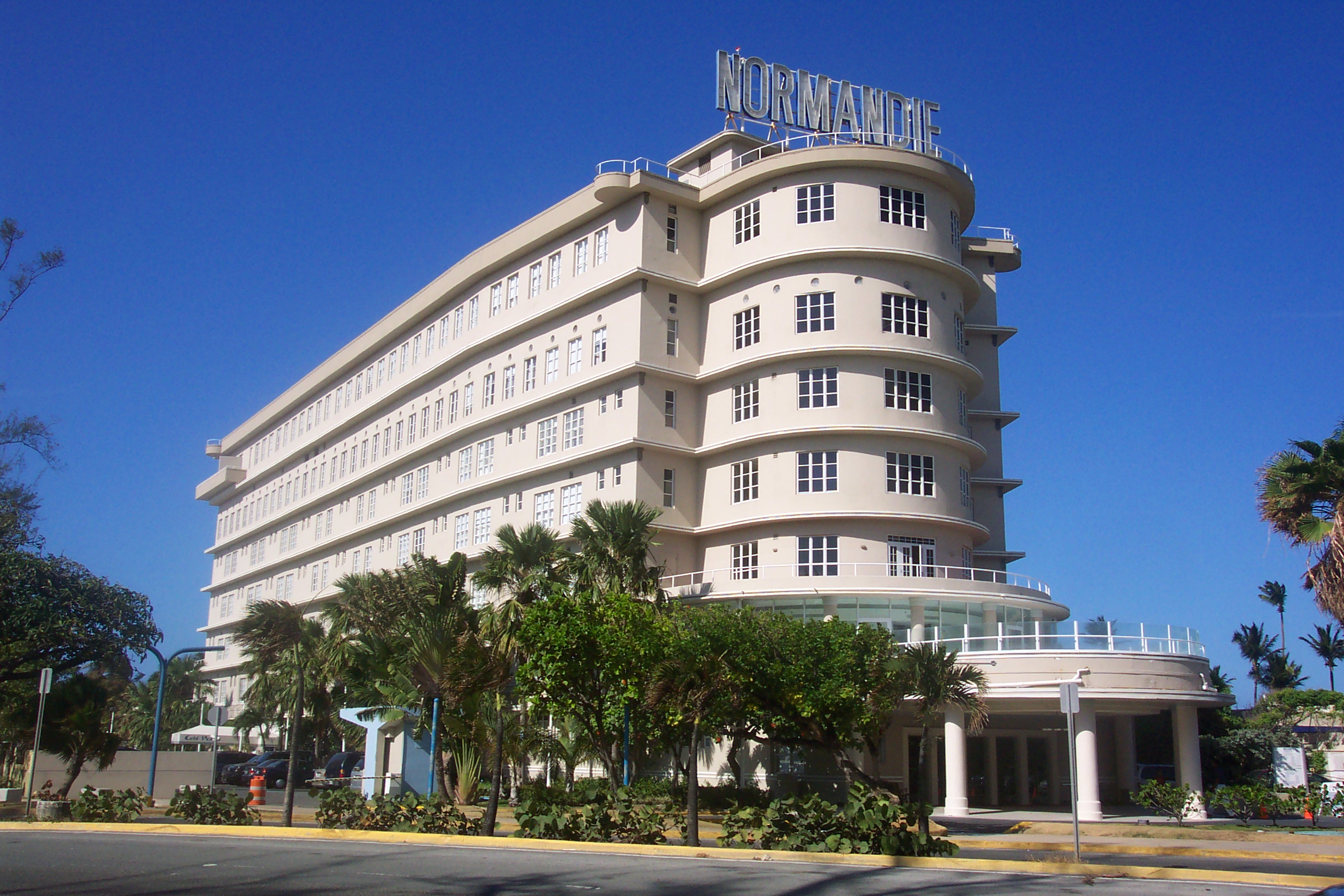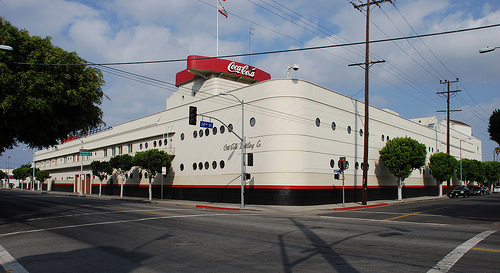Art Moderne
Art Moderne, also known as ‘Streamline Moderne’, is an architectural style that developed out of 1930s Art Deco. It was seen as a response to the Great Depression, designing buildings to be more streamlined and austere as opposed to the ambitious, opulent forms of Art Deco.
Buildings of the Art Moderne style were designed to emphasise simple geometry, incorporating curving forms, long horizontal lines and occasionally nautical elements.
The European Bauhaus movement was influential on American designers who adopted the principle of taking classical architecture in its simplest form, stripped of ornamentation or ‘excess’, unlike the chevrons, zigzags and decoration of Art Deco.
Art Moderne buildings were typically designed in low, horizontal shapes as opposed to Art Deco’s tendency towards tall and vertical buildings. They were also usually white, whereas Art Deco buildings embraced colour. The sharp angles of Art Deco were replaced with simple, aerodynamic curves. Exotic timbers and stone were replaced with stucco, cement and glass.
Some of the most common characteristics of the Art Moderne style include:
- Low, horizontal and asymmetrical.
- Flat roofs with no eaves.
- Rounded corners.
- Smooth, white walls.
- Wraparound, porthole and glass block windows.
- Steel balustrades.
Some of the well-known built examples include:
- The Normandie Hotel, San Juan (see top image).
- Daily Express Building, Manchester.
- Midland Hotel, Morecambe.
- Ford Building, San Diego.
- De La Warr Pavilion, Bexhill-on-Sea.
- Coca-Cola Building, Los Angeles (see above).
[edit] Related articles on Designing Buildings Wiki
- Architectural styles.
- Art Deco.
- Art Nouveau.
- Arts and craft movement.
- Bauhaus.
- Beaux Arts style.
- Chicago school of architecture.
- Classical Revival style.
- Constructivist architecture.
- Deconstructivism.
- Futurist architecture.
- Italian Renaissance revival style.
- Metabolism.
- Mimetic architecture.
- Modern building.
- Modernist architecture.
- PWA Moderne.
- Skyscraper.
- Spanish Colonial revival style.
- Tudor revival style.
Featured articles and news
RTPI leader to become new CIOB Chief Executive Officer
Dr Victoria Hills MRTPI, FICE to take over after Caroline Gumble’s departure.
Social and affordable housing, a long term plan for delivery
The “Delivering a Decade of Renewal for Social and Affordable Housing” strategy sets out future path.
A change to adoptive architecture
Effects of global weather warming on architectural detailing, material choice and human interaction.
The proposed publicly owned and backed subsidiary of Homes England, to facilitate new homes.
How big is the problem and what can we do to mitigate the effects?
Overheating guidance and tools for building designers
A number of cool guides to help with the heat.
The UK's Modern Industrial Strategy: A 10 year plan
Previous consultation criticism, current key elements and general support with some persisting reservations.
Building Safety Regulator reforms
New roles, new staff and a new fast track service pave the way for a single construction regulator.
Architectural Technologist CPDs and Communications
CIAT CPD… and how you can do it!
Cooling centres and cool spaces
Managing extreme heat in cities by directing the public to places for heat stress relief and water sources.
Winter gardens: A brief history and warm variations
Extending the season with glass in different forms and terms.
Restoring Great Yarmouth's Winter Gardens
Transforming one of the least sustainable constructions imaginable.
Construction Skills Mission Board launch sector drive
Newly formed government and industry collaboration set strategy for recruiting an additional 100,000 construction workers a year.
New Architects Code comes into effect in September 2025
ARB Architects Code of Conduct and Practice available with ongoing consultation regarding guidance.
Welsh Skills Body (Medr) launches ambitious plan
The new skills body brings together funding and regulation of tertiary education and research for the devolved nation.
Paul Gandy FCIOB announced as next CIOB President
Former Tilbury Douglas CEO takes helm.
UK Infrastructure: A 10 Year Strategy. In brief with reactions
With the National Infrastructure and Service Transformation Authority (NISTA).

























